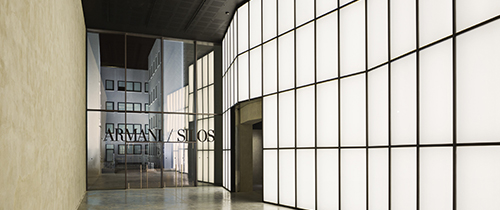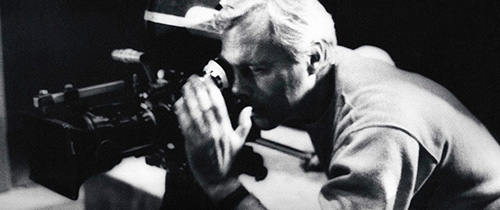- PLAN YOUR VISIT
- EXHIBITIONS
- INITIATIVES
the maximum number of available tickets for this timeslot has been reached
The maximum quantity must be equal to or less than 4
FABULA
by Charles Fréger
12 JANUARY – 24 MARCH, 2019
FROM WEDNESDAY TO SUNDAY
FROM 11:00 TO 19:00
“The vitality of color is what caught my eye first, drawing my attention to the work of Charles Fréger. That color, however, is no mere visual feat: it is a depiction of human energy. As a fashion designer, I know clothing is charged with a great symbolic meaning: Fréger constantly reminds us of that, scavenging the deepest aspects of dressing up as a way of communicating. I am very happy to host such an exhibition at Armani/Silos.” – Giorgio Armani
FABULA
by Charles Fréger
12 JANUARY – 24 MARCH, 2019
FROM WEDNESDAY TO SUNDAY
FROM 11:00 TO 19:00
“The vitality of color is what caught my eye first, drawing my attention to the work of Charles Fréger. That color, however, is no mere visual feat: it is a depiction of human energy. As a fashion designer, I know clothing is charged with a great symbolic meaning: Fréger constantly reminds us of that, scavenging the deepest aspects of dressing up as a way of communicating. I am very happy to host such an exhibition at Armani/Silos.” – Giorgio Armani
THE EXHIBITION
Entitled Fabula, the extensive anthological endeavor documents the width and depth of the French photographer’s ongoing research – as much encyclopedic as poetic – into different communities, the individuals who make them and the dress codes they adopt in order to be part of a group.
THE ARTIST
The artist was born in Bourges, France, in 1975, and graduated from the Rouen School of Art in 2000. His work focuses on the poetic and anthropological representation of social groups such as athletes, scholars and armed forces, with attention on what they wear, the uniform being the most external representation of the group itself. Fréger concentrates on exuberance as well as more modest situations.
He has published numerous books and exhibited in major photography festivals, in several museums and galleries in Europe, Asia and the United States.
THE ARTIST
The artist was born in Bourges, France, in 1975, and graduated from the Rouen School of Art in 2000. His work focuses on the poetic and anthropological representation of social groups such as athletes, scholars and armed forces, with attention on what they wear, the uniform being the most external representation of the group itself. Fréger concentrates on exuberance as well as more modest situations.
He has published numerous books and exhibited in major photography festivals, in several museums and galleries in Europe, Asia and the United States.
THE WORKS
Adopting a stark and straight portraiture style, yet keeping an empathetic gaze onto his subjects, Charles Fréger explores the dress codes of groups both small and big, focusing on the outer strata – clothing, masks – they adopt. The photographer’s quest is expansive: he starts from the small and local expanding his research over the years to reach a universal dimension. Be it the white swimming cap of the swimmer, or the ritual masks worn throughout the world – Europe, Japan, Central and Southern America – Fréger is triggered by the way humans deal with deeply felt fears and with the need, or will, to belong. Ultimately, his work builds a growing codification of signs, highlighting the power of dresses as a primal means of non-verbal communication.
What makes his oeuvre so startling is the involvement of the photographer with the subjects. At times Charles Fréger takes active part in the masking and the dressing up, in order to fully understand what he is investigating. Such human effort translates into images of powerful honesty, giving back a captivating insight into the visual richness of mankind.
THE WORKS
Adopting a stark and straight portraiture style, yet keeping an empathetic gaze onto his subjects, Charles Fréger explores the dress codes of groups both small and big, focusing on the outer strata – clothing, masks – they adopt. The photographer’s quest is expansive: he starts from the small and local expanding his research over the years to reach a universal dimension. Be it the white swimming cap of the swimmer, or the ritual masks worn throughout the world – Europe, Japan, Central and Southern America – Fréger is triggered by the way humans deal with deeply felt fears and with the need, or will, to belong. Ultimately, his work builds a growing codification of signs, highlighting the power of dresses as a primal means of non-verbal communication.
What makes his oeuvre so startling is the involvement of the photographer with the subjects. At times Charles Fréger takes active part in the masking and the dressing up, in order to fully understand what he is investigating. Such human effort translates into images of powerful honesty, giving back a captivating insight into the visual richness of mankind.
The whole ground floor of Armani/Silos acts as a backdrop for over two hundred and fifty images, the first retrospective of such size and scope devoted to the French artist. Specimens of Fréger’s wide-spanning photographic work, from the early Water Polo swimmers series of the year 2000 to more recent images taken in 2016, such as the Mardi Gras Indians series. The display puts the different groups of images in dialogue with one other creating a visual protocol where the photographic portraits and the uniforms coexist and the emphasis is placed on the increasing theatricality of the author’s oeuvre.
The whole ground floor of Armani/Silos acts as a backdrop for over two hundred and fifty images, the first retrospective of such size and scope devoted to the French artist. Specimens of Fréger’s wide-spanning photographic work, from the early Water Polo swimmers series of the year 2000 to more recent images taken in 2016, such as the Mardi Gras Indians series. The display puts the different groups of images in dialogue with one other creating a visual protocol where the photographic portraits and the uniforms coexist and the emphasis is placed on the increasing theatricality of the author’s oeuvre.
The selection includes portraits of the Finnish ice-skating team (Steps), ), images of young Sumo wrestlers (Rikishi) ), a document of European armies and their uniforms (Empire), images of Sikh soldiers (Sikh Regiment of India) and Jaipur elephants (Painted Elephants), to the seminal large series of Wilder Mann, and then Yokainoshima, both dedicated to masked traditions in relation to rural life. Each community has its own code, but the driving principle behind the urge to express belonging through clothing is somehow common. Fréger’s pictures highlight such aspect.
The selection includes portraits of the Finnish ice-skating team (Steps), ), images of young Sumo wrestlers (Rikishi) ), a document of European armies and their uniforms (Empire), images of Sikh soldiers (Sikh Regiment of India) and Jaipur elephants (Painted Elephants), to the seminal large series of Wilder Mann, and then Yokainoshima, both dedicated to masked traditions in relation to rural life. Each community has its own code, but the driving principle behind the urge to express belonging through clothing is somehow common. Fréger’s pictures highlight such aspect.
THE INAUGURATION
THE INAUGURATION
Go inside the Armani/Silos opening event for Fabula, the retrospective by artist Charles Fréger.
Go inside the Armani/Silos opening event for Fabula, the retrospective by artist Charles Fréger.
WALKTHROUGH
WALKTHROUGH
The artist lead a 3-day workshop at Armani/Silos involving students from Milan’s photography and fashion schools. During the classes, the photographer discussed the role of art and photography in today’s world with the students. The workshop concluded with a walkthrough of Fréger’s exhibition.
The artist lead a 3-day workshop at Armani/Silos involving students from Milan’s photography and fashion schools. During the classes, the photographer discussed the role of art and photography in today’s world with the students. The workshop concluded with a walkthrough of Fréger’s exhibition.
Sign up to learn about Armani/Silos and get a first look at upcoming events.
Your subscription has been confirmed
Temporarily closed
Starting from May 21st
MON TUE – closed
WED FRI SUN – from 11 am to 7 pm
Last admission 6 pmTHU SAT – from 11 am to 9 pm
Last admission 8 pm
via Bergognone, 40 Milan, Italy
-
(number active Mon – Sat from 9:00am to 6:30pm, excluding holidays)



